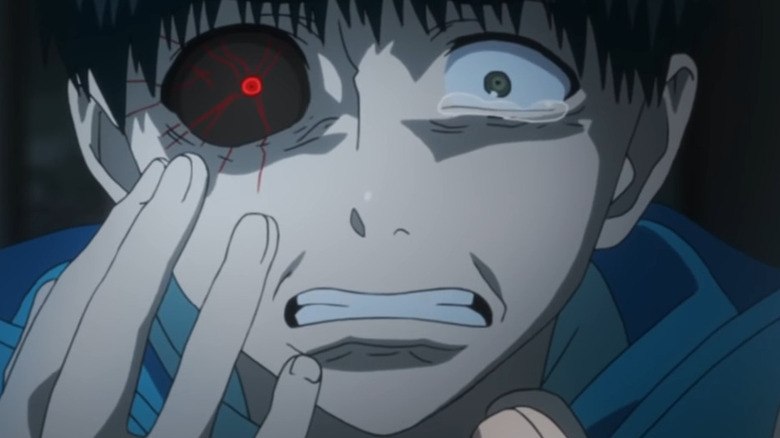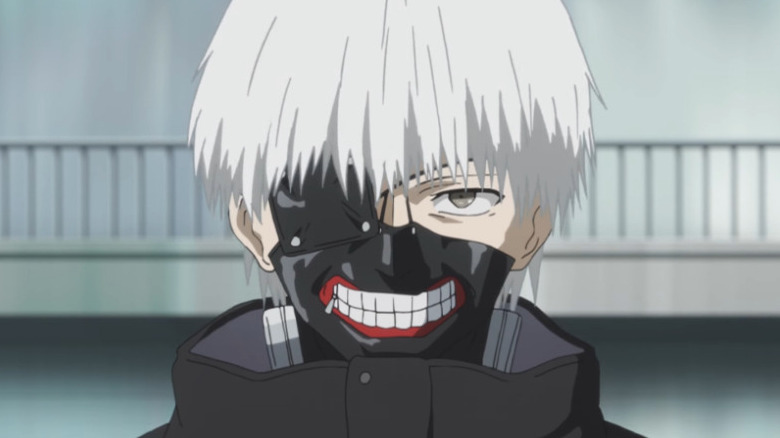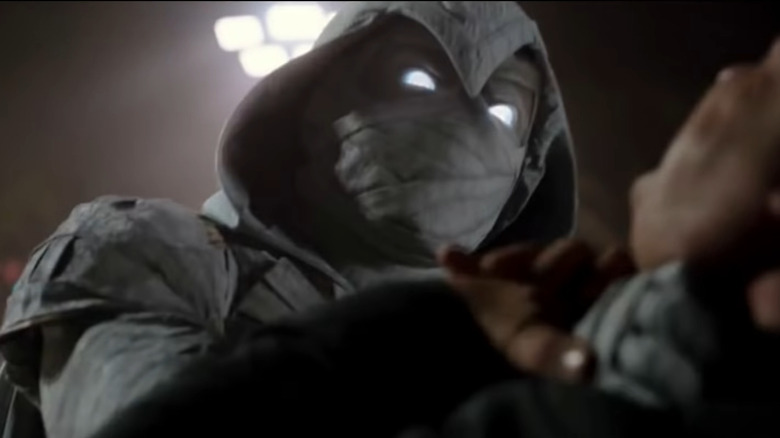Tokyo Ghoul's Creator Based Ghouls On His Christian Upbringing
Within the Seinen anime genre, Sui Ishida's "Tokyo Ghoul" is celebrated by many fans as one of the best manga. The dark fantasy series is set in a world where human-appearing creatures called ghouls live in secret. And their hidden nature from the rest of humanity is because ghouls have to eat human flesh to survive. College student Ken Kaneki suddenly finds himself embroiled in their world after transforming into a part ghoul-human creature after a date goes tragically wrong. Much of the manga details his struggle to survive after his notable change.
With a talent for producing artwork that can be as terrifying as it is captivating, Ishida's manga makes the supernatural and just plain bizarre appear so visually striking. And fortunately, much of his designs translated well into the anime adaptation of "Tokyo Ghoul." However, besides the artwork, Ishida crafted an original premise that sometimes shows a sympathetic heart beating from within its horror shell. Despite all their impressive powers, ghouls are still tragic outsiders in society. And that feeling of being an outsider is something Ishida learned about from his Christian upbringing.
Ishida felt alienated from others while growing up
While Christianity might be considered one of the major religions in the world, in Japan, it's quite the opposite. According to Reuters, of Japan's population, roughly 1 % identify as Christian. This means Japanese Christians are in the minority compared to the rest of the country. And as a child, Sui Ishida's family was a part of this small group. Per a fan-translated Yomiuri Shimbun interview on Tumblr, Sui Ishida revealed that his parents were Christian. And along with having to move around a lot, the "Tokyo Ghoul" creator felt alienated from others.
It sounds like Ishida had a difficult time while growing up. But he continued to note that there were also times when he felt more like the rest of society. As a result, this all served as inspiration for the creation of the ghouls and the character Ken Kaneki. "I made Kaneki into a half-ghoul because I thought he'd be able to empathize with both humans and ghouls," Ishida said in the interview. "From that point on, I vaguely thought about how both races could coexist. It was really difficult finding a solution, though..."
Kaneki being a hybrid is perfect in this sense, as he not only serves as a potential bridge between humans and ghouls but is also our link into their particular world. As he learns more about ghoul society, It doesn't take long to see that the concepts of heroes and villains aren't as clear-cut as in other series. And through him, it's easy to understand humanity's basic fear of being on a ghoul's menu and a ghoul's cannibalistic plight at simply trying to live.
Ishida created artwork for a Marvel character similar to Kaneki
Just as "Tokyo Ghoul" is a dark whiff of fresh air within manga, Marvel's "Moon Knight" is also a welcome outlier in a world already brimming with strangeness. Marvel's series focuses on a superhero that tackles ancient gods as well as his multiple personalities. When "Moon Knight" leaped out of the comics and officially into the MCU with a Disney+ series, it gained a lot of fans. And Sui Ishida may be counted as one of them. Via Crunchyroll, to celebrate "Moon Knight" premiering worldwide, Ishida drew special artwork of the character side-by-side with "Tokyo Ghoul" protagonist Ken Kaneki. It's a fantastic art piece that has us wishing for some type of official team-up between the two characters.
Crunchyroll continued to note that after a few episodes of "Moon Knight," Ishida was about ready to consider the character his favorite from Marvel. And while Ishida could have just illustrated Moon Knight solo, a deeper look at his pairing with Kaneki certainly makes sense beyond their penchant for the color white. Both are troubled protagonists, forced to fight violently in a shadowy world that they didn't necessarily initially sign up to participate. And fans could undoubtedly pull out similarities between both characters' challenges with mental illness or multiple personalities. By the end of "Tokyo Ghoul," it feels like Kaneki has become several different people throughout the series.


